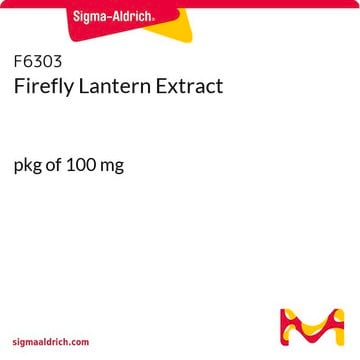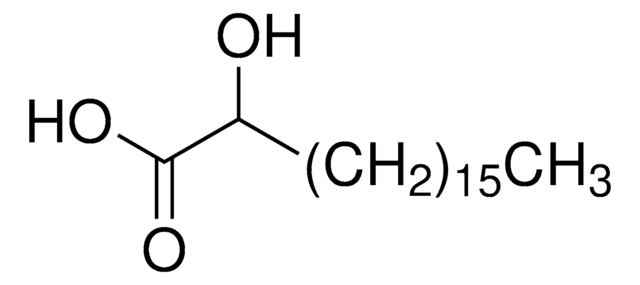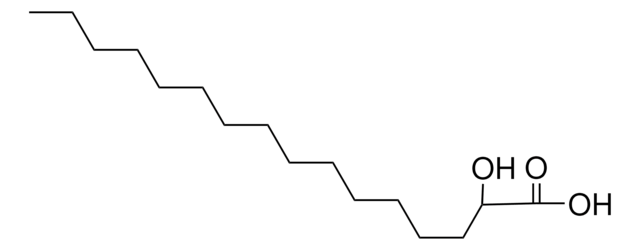H3648
(±)-3-Hydroxydecanoic acid
≥98%
Synonym(s):
DL-β-Hydroxycapric acid
Sign Into View Organizational & Contract Pricing
All Photos(1)
About This Item
Empirical Formula (Hill Notation):
C10H20O3
CAS Number:
Molecular Weight:
188.26
MDL number:
UNSPSC Code:
12352211
PubChem Substance ID:
NACRES:
NA.25
Recommended Products
Assay
≥98%
form
powder
functional group
carboxylic acid
lipid type
saturated FAs
shipped in
ambient
storage temp.
2-8°C
SMILES string
CCCCCCCC(O)CC(O)=O
InChI
1S/C10H20O3/c1-2-3-4-5-6-7-9(11)8-10(12)13/h9,11H,2-8H2,1H3,(H,12,13)
InChI key
FYSSBMZUBSBFJL-UHFFFAOYSA-N
Application
- LORE receptor homomerization is required for 3-hydroxydecanoic acid-induced immune signaling and determines the natural variation of immunosensitivity within the Arabidopsis genus.: This study unveils the crucial role of 3-Hydroxydecanoic acid in mediating immune responses through LORE receptor homomerization in plants, providing insights into the molecular mechanisms of plant defense and potential agricultural applications (Eschrig et al., 2024).
Storage Class Code
11 - Combustible Solids
WGK
WGK 3
Flash Point(F)
Not applicable
Flash Point(C)
Not applicable
Personal Protective Equipment
dust mask type N95 (US), Eyeshields, Gloves
Certificates of Analysis (COA)
Search for Certificates of Analysis (COA) by entering the products Lot/Batch Number. Lot and Batch Numbers can be found on a product’s label following the words ‘Lot’ or ‘Batch’.
Already Own This Product?
Find documentation for the products that you have recently purchased in the Document Library.
Customers Also Viewed
B Füchtenbusch et al.
Applied microbiology and biotechnology, 53(2), 167-172 (2000-03-10)
Screening experiments identified several bacteria which were able to use residual oil from biotechnological rhamnose production as a carbon source for growth. Ralstonia eutropha H16 and Pseudomonas oleovorans were able to use this waste material as the sole carbon source
E Déziel et al.
Biochimica et biophysica acta, 1440(2-3), 244-252 (1999-10-16)
Liquid chromatography/mass spectrometry using electrospray ionisation was used to analyse rhamnolipids produced by a Pseudomonas aeruginosa strain with mannitol or naphthalene as carbon source. Identification and quantification of 28 different rhamnolipid congeners was accomplished using a reverse-phase C(18) column and
Ahmad Mohammad Abdel-Mawgoud et al.
Applied microbiology and biotechnology, 86(5), 1323-1336 (2010-03-26)
Rhamnolipids are glycolipidic biosurfactants produced by various bacterial species. They were initially found as exoproducts of the opportunistic pathogen Pseudomonas aeruginosa and described as a mixture of four congeners: alpha-L-rhamnopyranosyl-alpha-L-rhamnopyranosyl-beta-hydroxydecanoyl-beta-hydroxydecanoate (Rha-Rha-C(10)-C(10)), alpha-L-rhamnopyranosyl-alpha-L-rhamnopyranosyl-beta-hydroxydecanoate (Rha-Rha-C(10)), as well as their mono-rhamnolipid congeners Rha-C(10)-C(10)
Florian Bredenbruch et al.
Journal of bacteriology, 187(11), 3630-3635 (2005-05-20)
The role of intercellular communication in the regulation of bacterial multicellular behavior has received widespread attention, and a variety of signal molecules involved in bacterial communication have been discovered. In addition to the N-acyl-homoserine lactones, 4-hydroxy-2-alkylquinolines (HAQs), including the Pseudomonas
Hannes Löwe et al.
Biotechnology for biofuels, 10, 190-190 (2017-08-18)
One of the major challenges for the present and future generations is to find suitable substitutes for the fossil resources we rely on today. Cyanobacterial carbohydrates have been discussed as an emerging renewable feedstock in industrial biotechnology for the production
Our team of scientists has experience in all areas of research including Life Science, Material Science, Chemical Synthesis, Chromatography, Analytical and many others.
Contact Technical Service


![Poly[(R)-3-hydroxybutyric acid] natural origin](/deepweb/assets/sigmaaldrich/product/structures/129/476/7d1c924b-f644-4889-a2d6-d7a923ce382c/640/7d1c924b-f644-4889-a2d6-d7a923ce382c.png)









